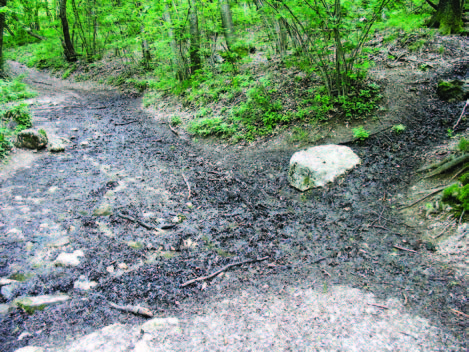Fifty Years of the Hypotelminorheic: What Have We Learned?
DOI:
https://doi.org/10.3986/ac.v41i2-3.564Abstract
Originally described by Meštrov in 1962, hypotelminorheic habitats are superficial subterranean drainages, typically less than a meter or so in depth, that emerge at small seepage springs. These are persistent wet spots, typically with blackened leaves in small depressions. There may be no flow during dry periods, but the underlying clay retains water above. They share the landscape with other small bodies of water (močila in Slovenian), not necessarily connected with groundwater. Hypotelminorheic habitats (mezišča in Slovenian) usually harbor a fauna dominated by species adapted to subterranean life, characteristically without eyes or pigment. The basic chemistry and hydrology of the habitat is described as are the basic faunal elements. The habitat is placed in a more general context by reviewing how species invade the habitat, their morphology, and their possible connection to deeper subterranean habitats.Downloads
Download data is not yet available.

Downloads
Published
2012-12-15
How to Cite
Pipan, T., Fišer, C., Novak, T., & Culver, D. C. (2012). Fifty Years of the Hypotelminorheic: What Have We Learned?. Acta Carsologica, 41(2-3). https://doi.org/10.3986/ac.v41i2-3.564
Issue
Section
Original papers
License
Authors guarantee that the work is their own original creation and does not infringe any statutory or common-law copyright or any proprietary right of any third party. In case of claims by third parties, authors commit their self to defend the interests of the publisher, and shall cover any potential costs.
More in: Submission chapter




